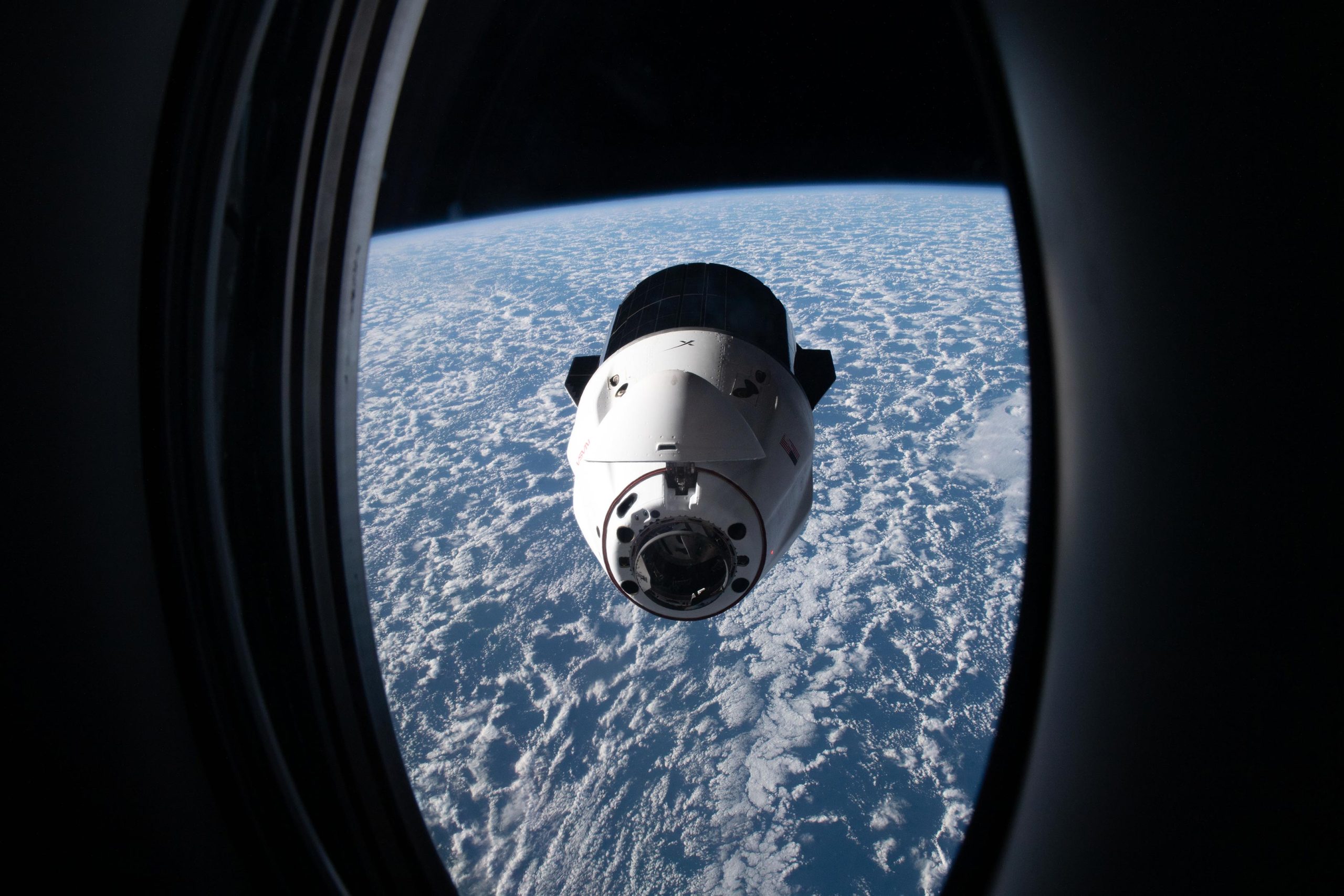La nave de suministro Dragon de SpaceX que transporta más de 5800 libras de nuevos experimentos científicos y suministros para la tripulación, fotografiada desde una ventana de la nave de tripulación Dragon Freedom de SpaceX, se acerca a la Estación Espacial Internacional sobre el Océano Atlántico Sur. Crédito: NASA
International Space Station (ISS) for NASA. The spacecraft carried more than 4,000 pounds of valuable scientific experiments and other cargo back to Earth.
Dragon was released from the forward port of the International Space Station’s Harmony module at 11:05 a.m. on Friday, August 19, while the ISS was flying 259 miles over the Pacific Ocean. It arrived at the space station on July 16, following a launch two days earlier on a SpaceX Falcon 9 rocket from Launch Complex 39A at NASA’s Kennedy Space Center in Florida.

This view of the International Space Station from a window on the orbiting lab’s Russian segment shows portions of the Rassvet module’s docking port, the U.S. Destiny laboratory module, the Harmony module, Columbus laboratory module, and the Kibo laboratory module. Docked to Harmony at top, is the SpaceX Dragon resupply ship. Credit: NASA
Some of the scientific investigations returned by Dragon include:
- Space’s impact on materials: The Materials International Space Station Experiment-15-NASA (MISSE-15-NASA) experiment tests, qualifies, and quantifies the impact of the low-Earth orbit environment on new materials and components, such as spacecraft materials and wearable radiation protection. Successful experiment results could have applications both in the harsh environments of space and on Earth.
- Spacesuit cooling: Spacesuit Evaporation Rejection Flight Experiment (SERFE) demonstrates a new technology using water evaporation to remove heat from spacesuits and maintain appropriate temperatures for crew members and equipment during spacewalks. The investigation determines whether microgravity affects performance and evaluates the technology’s effect on contamination and corrosion of spacesuit material.
- Cell signaling in microgravity: The ESA (European Space Agency) sponsored investigation Bioprint FirstAid Handheld Bioprinter (Bioprint FirstAid) enables the rapid use of formerly prepared bio-inks, containing the patient’s own cells, to form a band-aid patch in the case of injury.

August 19, 2022: International Space Station Configuration. Four spaceships are docked at the space station including the SpaceX Crew Dragon Freedom and Russia’s Soyuz MS-21 crew ship and the Progress 80 and 81 resupply ships. Credit: NASA

«Maven de internet exasperantemente humilde. Comunicadora. Fanático dedicado al tocino.»
También te puede interesar
-
Dormir bien el fin de semana puede reducir en una quinta parte el riesgo de sufrir enfermedades cardíacas: estudio | Cardiopatía
-
Una nueva investigación sobre la falla megathrust indica que el próximo gran terremoto puede ser inminente
-
Caso de Mpox reportado en la cárcel del condado de Las Vegas
-
SpaceX lanzará 21 satélites Starlink en el cohete Falcon 9 desde Cabo Cañaveral – Spaceflight Now
-
SpaceX restablece el lanzamiento pospuesto de Polaris Dawn, una misión espacial comercial récord

